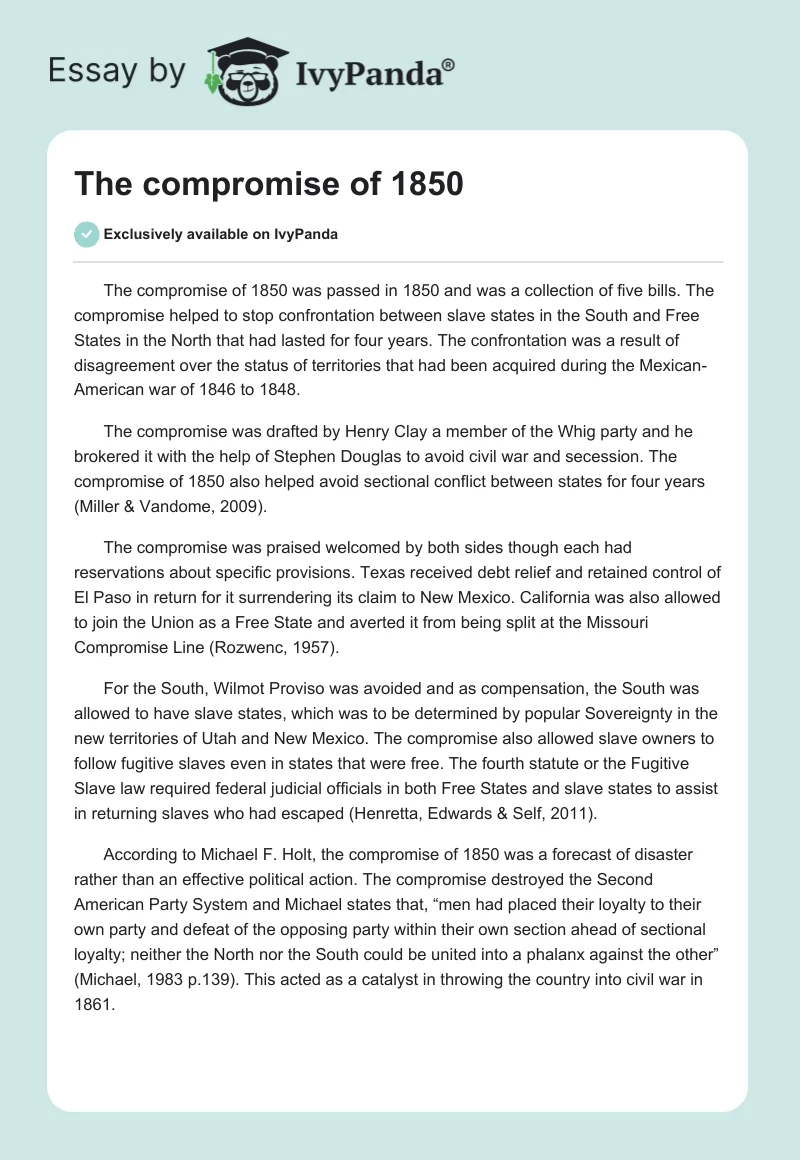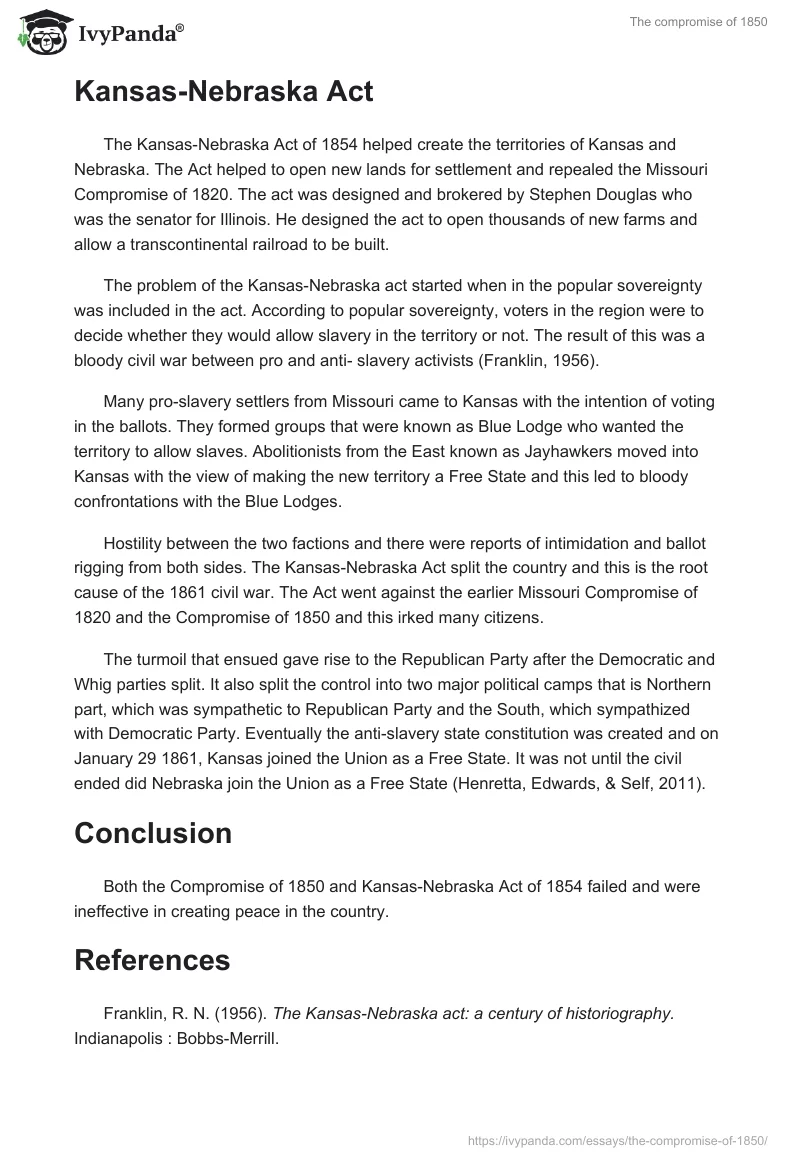The compromise of 1850 was passed in 1850 and was a collection of five bills. The compromise helped to stop confrontation between slave states in the South and Free States in the North that had lasted for four years. The confrontation was a result of disagreement over the status of territories that had been acquired during the Mexican-American war of 1846 to 1848.
The compromise was drafted by Henry Clay a member of the Whig party and he brokered it with the help of Stephen Douglas to avoid civil war and secession. The compromise of 1850 also helped avoid sectional conflict between states for four years (Miller & Vandome, 2009).
The compromise was praised welcomed by both sides though each had reservations about specific provisions. Texas received debt relief and retained control of El Paso in return for it surrendering its claim to New Mexico. California was also allowed to join the Union as a Free State and averted it from being split at the Missouri Compromise Line (Rozwenc, 1957).
For the South, Wilmot Proviso was avoided and as compensation, the South was allowed to have slave states, which was to be determined by popular Sovereignty in the new territories of Utah and New Mexico. The compromise also allowed slave owners to follow fugitive slaves even in states that were free. The fourth statute or the Fugitive Slave law required federal judicial officials in both Free States and slave states to assist in returning slaves who had escaped (Henretta, Edwards & Self, 2011).
According to Michael F. Holt, the compromise of 1850 was a forecast of disaster rather than an effective political action. The compromise destroyed the Second American Party System and Michael states that, “men had placed their loyalty to their own party and defeat of the opposing party within their own section ahead of sectional loyalty; neither the North nor the South could be united into a phalanx against the other” (Michael, 1983 p.139). This acted as a catalyst in throwing the country into civil war in 1861.
Kansas-Nebraska Act
The Kansas-Nebraska Act of 1854 helped create the territories of Kansas and Nebraska. The Act helped to open new lands for settlement and repealed the Missouri Compromise of 1820. The act was designed and brokered by Stephen Douglas who was the senator for Illinois. He designed the act to open thousands of new farms and allow a transcontinental railroad to be built.
The problem of the Kansas-Nebraska act started when in the popular sovereignty was included in the act. According to popular sovereignty, voters in the region were to decide whether they would allow slavery in the territory or not. The result of this was a bloody civil war between pro and anti- slavery activists (Franklin, 1956).
Many pro-slavery settlers from Missouri came to Kansas with the intention of voting in the ballots. They formed groups that were known as Blue Lodge who wanted the territory to allow slaves. Abolitionists from the East known as Jayhawkers moved into Kansas with the view of making the new territory a Free State and this led to bloody confrontations with the Blue Lodges.
Hostility between the two factions and there were reports of intimidation and ballot rigging from both sides. The Kansas-Nebraska Act split the country and this is the root cause of the 1861 civil war. The Act went against the earlier Missouri Compromise of 1820 and the Compromise of 1850 and this irked many citizens.
The turmoil that ensued gave rise to the Republican Party after the Democratic and Whig parties split. It also split the control into two major political camps that is Northern part, which was sympathetic to Republican Party and the South, which sympathized with Democratic Party. Eventually the anti-slavery state constitution was created and on January 29 1861, Kansas joined the Union as a Free State. It was not until the civil ended did Nebraska join the Union as a Free State (Henretta, Edwards, & Self, 2011).
Conclusion
Both the Compromise of 1850 and Kansas-Nebraska Act of 1854 failed and were ineffective in creating peace in the country.
References
Franklin, R. N. (1956). The Kansas-Nebraska act: a century of historiography. Indianapolis : Bobbs-Merrill.
Henretta, A., Edwards, R., & Self, O. (2011). America’s History. New York: Bedford Martins
Michael, F. H. (1983). The Political Crisis of the 1850’s. New York: W. W. Norton and Company
Miller, F. P., & Vandome, A. F. (2009). Compromise of 1850. New York: Bedford Martins
Rozwenc, E. C. (1957). The Compromise of 1850, Volume 27Problems in American civilization. Boston: Heath.


